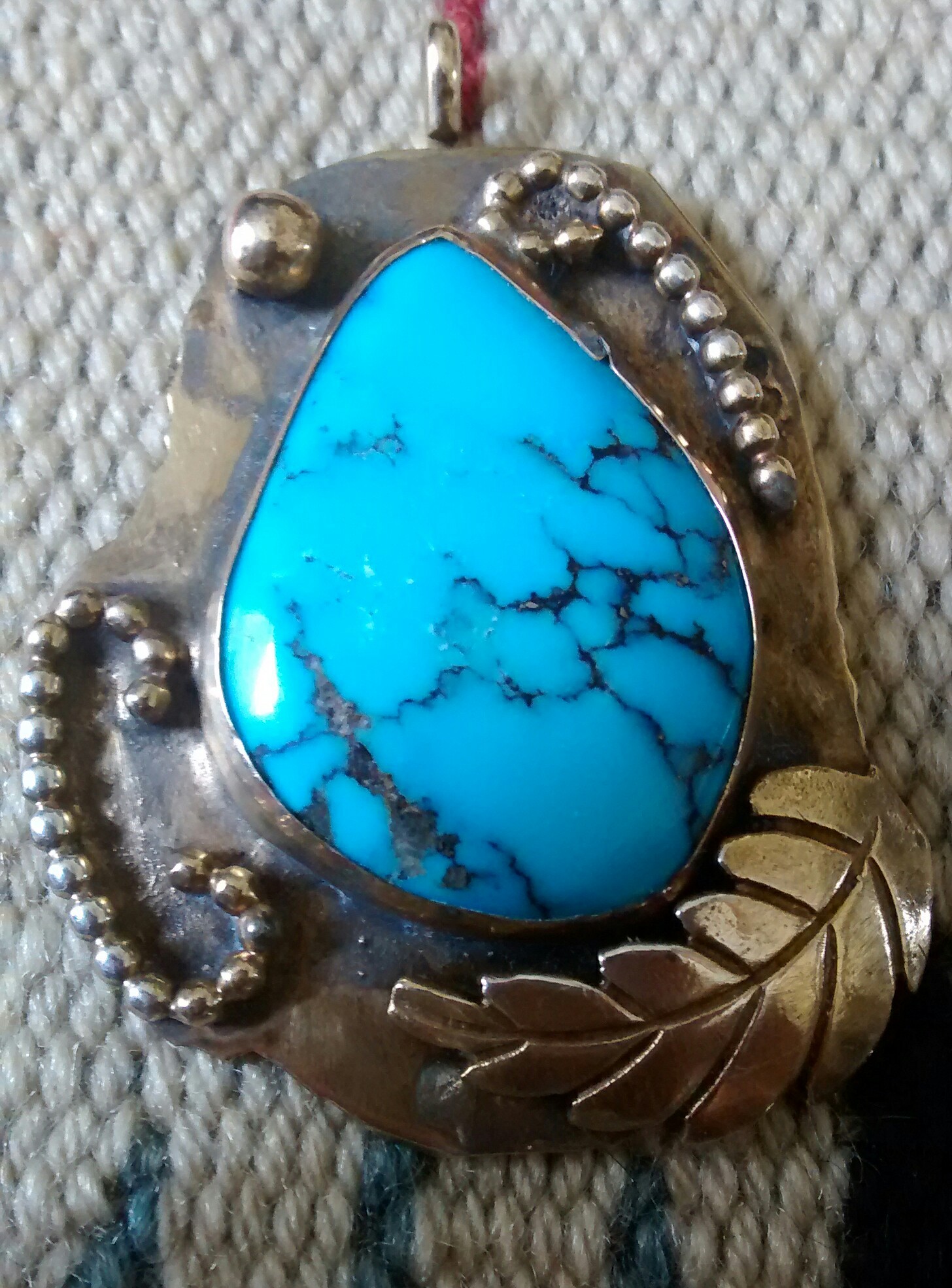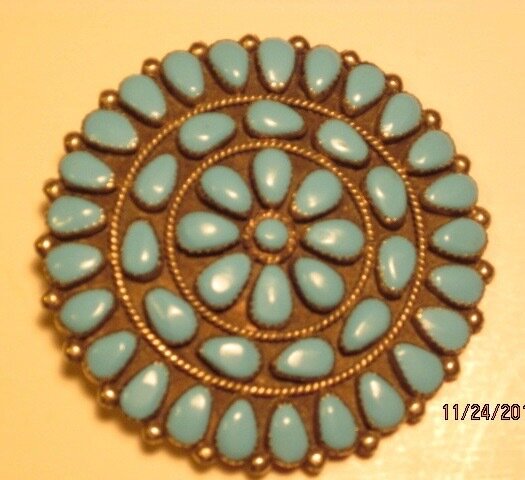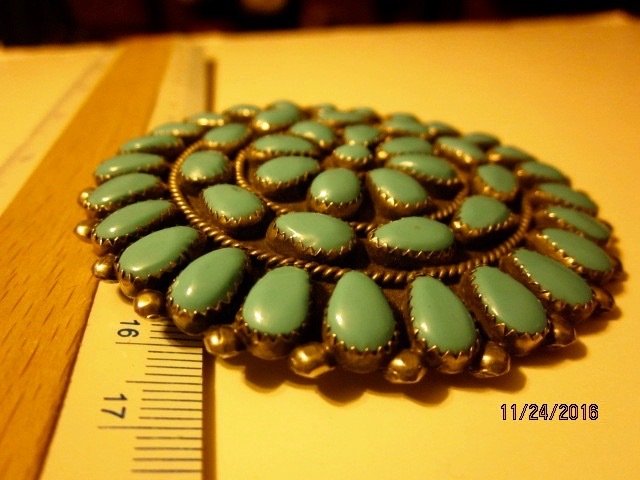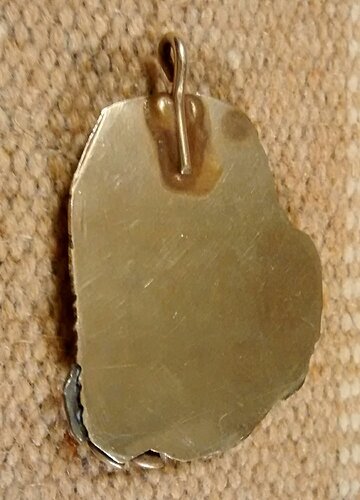Hello all!
I have a turquoise pendant that is in a goldwash setting. I am not sure if it is sterling, I tried picking it up with a magnet and the only place that the magnet ‘stuck’ is in the middle of the back of the pendant. (I know that is not a definitive test)The stone is lovely, with what looks like pyrite in the matrix.
The cluster brooch is 3" across. It has loops on either side, possibly so it can be sewn onto a garment? I could not get a decent picture of the turquoise color, it is a very clear blue, something like the turquoise pendant. I am not sure if the stones are real because the color is so uniform and pure.
Thank you for any input about these items.
Happy Thanksgiving!


Hello Jenna!
You have some very beautiful pieces here. As you stated earlier, the “magnet test” is not a definite sterling test, but there are some other alternatives! You can purchase an acid test kit online and test any metal jewelry for purity content (like this one, here: https://www.ebay.com/itm/141145126156 ). You can also look at your pieces under a jeweler’s loupe or a good magnifying glass, and see if there is any discoloration of the metal, or “wear through.” Since sterling jewelry is pure throughout, the areas that receive the most wear (like the bail or the edges of the pendant), should not show any wear through. As far as what kind of turquoise it could be, (although I can’t tell for sure from the picture) try researching Morenci turquoise or Ithaca Peak turquoise. Both mines are famous for their turquoise with pyrite matrix. If the stone is true Ithaca Peak or Morenci turquoise, I would be selling this piece in my shop for at least $85-$95, possibly more. If it is not Morenci or Ithaca Peak, I would value it from around $35-$45. Both Ithaca Peak and Morenci are highly collectible because the mines are mostly depleted, which explains the price difference.
Your cluster brooch sounds like it is a Zuni concho. A concho was originally a decorative piece worn on a horse’s saddle strings. I’ve seen people today wear them on belts, hat bands, and even repurpose them into rings or other jewelry. Even though the stones are uniform in color, they do appear to be real from the pictures you shared. You can try a “needle test” to see if your stones are real. You do this by heating up the tip of a sewing needle over the stove, and try to puncture the stone. A true piece of turquoise will be unaffected by the hot needle, whereas a resin or plastic stone will melt a small hole in the stone, and you may notice a burning smell of resin. Without seeing the back side of your concho, I think a fair staring value could be around $75-$95 dollars. This price will skyrocket if you have a pre- 1950 concho.
Jenna, I hope all this information is helpful to you in some way! Best.
